-
About
- About Listly
- Community & Support
- Howto
- Chrome Extension
- Bookmarklet
- WordPress Plugin
- Listly Premium
- Privacy
- Terms
- DMCA Copyright
- © 2010-2025 Boomy Labs


 Jodie Taylor
Jodie Taylor
Listly by Jodie Taylor
SCROLL DOWN & CLICK ON PUBLICATION TITLES TO ACCESS FULL-TEXT VERSIONS.
Books
● Taylor, J. (2012). Playing it queer: Popular music, identity and queer world-making. Bern, Switzerland: Peter Lang Press. Preview or Purchase
● Bennett, A., Taylor, J., & Woodward, I. (Eds.). (2014). The festivalisation of culture. London: Ashgate. Preview or Purchase
● Baker, S., Bennett, A., & Taylor, J. (Eds.). (2013). Redefining mainstream popular music. New York: Routledge. Preview or Purchase
Book Chapters
● Taylor, J. (2018). Sound desires: Auralism and the sexual fetishisation of music. In S. Whiteley & F. Maus (Eds), The Oxford handbook of music and queerness. Oxford University Press.
● Taylor, J., & Dwyer, A. (2015). Sexualities and sensitivities: Queer(y)ing the ethics of youth research in the field. In S. Baker, B. Robards & R. Buttigieg (Eds.), Youth cultures and subcultures: Australian perspectives (pp. 258-269). London: Ashgate.
● Taylor, J. & Dwyer, A. (2015). Queer youth research/ers: A reflexive account of risk and intimacy in an ethical (mine)field. In P. Kelly & A. Kamp (Eds.), A critical youth studies for the 21st Century (pp.251-266). Brill.
● Taylor, J. (2014). Festivalising sexuality: Discourses of ‘pride’, counter-discourses of shame. In A. Bennett, J. Taylor & I. Woodward (Eds.), The festivalisation of culture (pp. 27–48). London: Ashgate.
● Taylor, J. (2013). Lesbian musicalities, queer strains and celesbian pop: The poetics and polemics of women-loving-women in mainstream popular music. In ● S. Baker, A. Bennett & J. Taylor (Eds.), Redefining mainstream popular music (pp. 39–49). New York: Routledge.
● Taylor, J. (2012). Queering age: Performances of post-youth sexual identities in queer scenes. In A. Bennett & P. Hodkinson (Eds.), Ageing and youth cultures: Music, style and identity (pp. 24–36). Oxford: Berg.
● Taylor, J. (2009). Spewing out of the closet: Musicology on queer punk. In E. Mackinlay, B. Bartleet & K. Barney (Eds.), Musical islands: Exploring connections between music, place and research (pp. 221–241). Newcastle, UK: Cambridge Scholars Press.
● Taylor, J. (2009). A way of loving, a way of knowing: Music, sexuality and the becoming of a queer musicologist. In B. Bartleet & C. Ellis (Eds.), Music autoethnography: Making autoethnography sing / making music personal (pp. 245–260). Bowen Hills, Qld: Australian Academic Press.
Refereed Journal Articles
● Taylor, J. (2013). Claiming queer territory in the study of subcultures and popular music. Sociology Compass, 7(3), 194–207.
● Taylor, J. (2012). Taking it in the ear: On musico-sexual synergies and the (queer) possibility that music is sex. Continuum: Journal of Media & Cultural Studies, 26(4), 603–614. Special issue: Erotic screen and sound.
● Taylor, J. (2012). Queerious youth: An empirical study of a queer youth cultural festival and its participants. Journal of Sociology, 48(3), 1–16.
● Bennett, A., & Taylor, J. (2012). Popular music and the aesthetics of ageing. Popular Music, 31(2), 231–243. As time goes by: Special issue: As time goes by: Music, dance and ageing.
● Taylor, J. (2012). Scenes and sexualities: Queerly reframing the music scenes perspective. Continuum: Journal of Media & Cultural Studies, 26(1), 143–156.
● Taylor, J. (2011). The intimate insider: Negotiating the ethics of friendship when doing insider research. Qualitative Research, 11(1), 3–22.
● Taylor, J. (2010). Queer temporalities: The significance of ‘music scene’ participation in the social identities of middle-aged queers. Sociology, 44(5), 893–907.
● Taylor, J. (2008). The queerest of the queer: Sexuality, politics and music on the Brisbane scene. Continuum: Journal of Media & Cultural Studies, 22(5), 651–665. Special issue: Music scenes.
● Haebich, A., & Taylor, J. (2007). Modern primitives leaping and stomping the earth: From ballet to bush doof. Aboriginal History Journal, 31, 63–84.
● Taylor, J. (2007). Music of kings and bio queens: Performing gender and the self. Kritikos: Journal of Postmodern Culture, 4.
Edited Special Editions of Scholarly Journals
● Taylor, J., & Baker, D. (Eds.). (2012). Special edition on ‘Erotic Screens and Sounds’, Continuum: Journal of Media & Cultural Studies, 26 (4).
Edited Conference Proceedings
● Hitchcock, M., & Taylor, J. (Eds.). (2012). Interactive: Refereed proceedings from the 2012 Australasian Computer Music Conference. Brisbane, July 12–15. Victoria: The Australasian Computer Music Association.
Articles in Refereed Conference Proceedings
● Taylor, J. (2009). Lesbian dissonance, music cultures and mainstreams. In C. Strong & M. Phillipov (Eds.), Stuck in the middle: The mainstream and its discontents. Selected papers from the 2008 IASPM Australia/New Zealand Conference (pp. 49–57). Auckland, NZ: IASPM-ANZ.
● Taylor, J. (2008). Pink noise: Queer identity and musical performance in a local context. In D. Bendrups (Ed.), Music on the Edge: Selected papers from the 2007 IASPM Australia/New Zealand Conference (pp. 168–174). Dunedin, NZ: IASPM-ANZ.
● Haebich, A., & Taylor, J. (2008). Creating and sustaining local knowledge societies and cultural diversity: A case study of cultural repositories in Australia. In M. Zlateva (Ed.), Cultural diversity and communication among cultures: Refereed proceedings from the 10th international scientific conference. Sofia, May 18–19, 2007: UNESCO.
Non-refereed Publications
● Taylor, J. (2013). [Review of VØ1CE: Vocal Aesthetics in Digital Arts and Media edited by Norie Neumark, Ross Gibson and Theo Van Leeuwen]. Australasian Journal of Popular Culture, 2(2), 307–318.
● Taylor, J. (2011). [Review of Being Ethnographic by Raymond Madden]. Journal of Sociology, 47(1), 113–114.
● Taylor, J. (2009, February). Queer punk daddy…lay your chocolate kisses on me. Spunk Magazine, 1, 24–25.
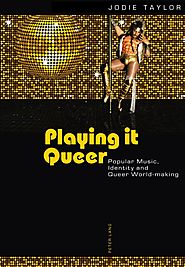
Popular music has always been a dynamic mediator of gender and sexuality, and a productive site of rebellion, oddity and queerness. The transformative Capacity of music-making, performance and consumption helps us to make sense of identity and allows us to glimpse otherworldliness, arousing the political imagination. With an activist voice that is impassioned yet adherent to scholarly rigour, Playing it Queer provides an original and compelling ethnographic account of the relationship between popular music, queer self-fashioning and (sub)cultural world-making.
This book begins with a comprehensive survey and critical evaluation of relevant literatures on queer identity and political debates as well as popular music, identity and (sub)cultural style. Contextualised within a detailed history of queer sensibilities and creative practices, including camp, drag, genderfuck, queercore, feminist music and club cultures, the author's rich empirical studies of local performers and translocal scenes intimately capture the meaning and value of popular musics and (sub)cultural style in everyday queer lives.
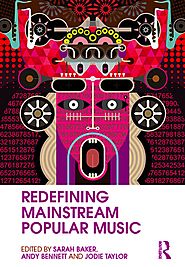
Redefining Mainstream Popular Music is a collection of seventeen essays that critically examines the idea of the "mainstream" in and across a variety of popular music styles and contexts. Notions of what is popular vary across generations and cultures – what may have been considered alternative to one group may be perceived as mainstream to another. Incorporating a wide range of popular music texts, genres, scenes, practices and technologies from the United Kingdom, North America, Australia and New Zealand, the authors theoretically challenge and augment our understanding of how the mainstream is understood and functions in the overlapping worlds of popular music production, consumption and scholarship. Spanning the local and the global, the historic and contemporary, the iconic and the everyday, the book covers a broad range of genres, from punk to grunge to hip-hop, while also considering popular music through other mediums, including mash-ups and the music of everyday work life. Redefining Mainstream Popular Music provides readers with an innovative and nuanced perspective of what it means to be mainstream.
Baker, S., Bennett, A., & Taylor, J. (Eds.). (2013). Redefining mainstream popular music. New York: Routledge.
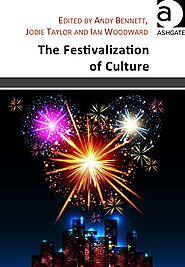
The Festivalisation of Culture explores the links between various local and global cultures, communities, identities and lifestyle narratives as they are both constructed and experienced in the festival context. Drawing on a wide range of case studies from Australia and Europe, festivals are examined as sites for the performance and critique of lifestyle, identity & cultural politics; as vehicles for the mobilization and cementation of local and global communities; and as spatio-temporal events that inspire and determine meaning in peoples' lives.
Investigating the manner in which festivals are no longer merely periodic, cultural, religious or historical events within communities, but rather a popular means through which citizens consume and experience culture, this book also sheds light on the increasing diversity of contemporary societies and the role played by festivals as sites of cohesion, cultural critique and social mobility. As such, this book will be of interest to those working in areas such as the sociology, consumption and commodification of culture, social and cultural geography, anthropology, cultural studies and popular music studies.
Bennett, A., Taylor, J., & Woodward, I. (Eds.). (2014).The festivalisation of culture. London: Ashgate.
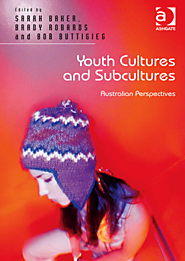
Reflecting on our own researcher/researched entanglements, in this chapter, we consider some of the ways sexually diverse researchers are situated by administrative authorities when doing research with sexually diverse young people. We examine how the heteronormativity of ethical bureaucracy and the homonormativity operative in the field structure understandings of ‘proper’ field relations, inform the regulation of research as ethical in academic institutions and position queer youth sexualities as a risk to be sensitively managed by a researcher. Combining our disciplinary perspectives (criminology and cultural sociology) and reflecting on our own experiences as queer femme adult women researching queer youth, we then punctuate this discussion by offering situated accounts of doing field work with queer youth. Focusing specifically on instances of identity policing, we discuss the ways in which our queer ‘insider’ credentials have been scrutinised by ethical review processes, which require declaration of one’s personal relationship to the field, and by LGBTIQ youth workers who mediated our access to the field. This paper will conclude with a discussion of how we might imagine a queer approach to field relationships. We argue the importance of an approach that necessarily disrupts the norms of doing youth research and gestures towards a range of ethical literacies if more productive research outcomes are to be made possible in future.
Taylor, J., & Dwyer, A. (2015). Sexualities and sensitivities: Queer(y)ing the ethics of youth research in the field. In S. Baker, B. Robards & R. Buttigieg (Eds.), Youth cultures and subcultures: Australian perspectives (pp. 258-269). London: Ashgate.
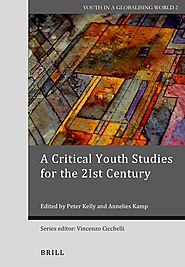
Combining our distinct disciplinary perspectives, our biographical narratives and our lived and intersubjective concepts of queerness, in this chapter, we critically reflect on our experiences as sexually diverse and (sub)culturally distinct female scholars conducting qualitative empirical research with sexual minority youth. Situating reflexivity as Adams and Holman Jones’ (2011, 108) have done: “as both an orientation to research and a writing practice that brings together the method of autoethnography and the paradigm of queer theory … [and their] commitments to uncertain, fluid, and becoming subjectivities”, we deploy this technique in the context of youth research as a means of claiming our story as research, gesturing toward more synergistic ways to think about intimacy and ethical situatedness in the field. Elaborating moments of discomfort and ease, we question the various normativities—institutional, social and (sub)cultural—one must negotiate in order to be seen as ‘proper’ researchers when working with queer young people and the ways that our ‘improperness’ brought us together and enabled our intellectual conversation.
Taylor, J. & Dwyer, A. (2015). Queer youth research/ers: A reflexive account of risk and intimacy in an ethical (mine)field. In P. Kelly & A. Kamp (Eds.), A critical youth studies for the 21st Century (pp. 251-266). Brill.
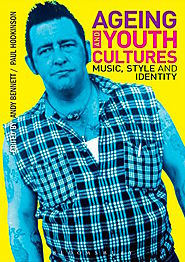
The physicality of an ageing body is inescapable, and for this reason the processes of ageing and the signs that mark ageing identities often appear as something beyond one’s social and cultural self, something innate. While it has become commonplace—at least in a post-structural context—to argue that one performatively assembles selfhood, age appears bound to the temporal norms that intersect with the corporeal signs of passing time. However, because ageing is a process embedded in the social and cultural, discourses of ageing construct normative and healthy modalities of ageing while rendering the nonnormative unhealthy, undesirable or deviant. Much like the physicality of the human body, which through a cultural reading is sexed—in turn ‘determining’ a normative and thus socially appropriate performance of gender (Butler 1993)—the physical signs of an aged body are also interpreted through a cultural lens. Age, like sex, corresponds to a set of social and cultural norms that sketch out desirable, culturally intelligible and thus successful performances of how one should age. Just as a female body becomes normalized through its reiteration of femininity, an ageing body similarly becomes normalized through the reiteration of prescriptive age-appropriate behaviours. Queer scenes can offer one such example of ‘nonnormative’ ageing, where typically youthful and less coherent social activities such as attending gigs and dance parties, nonmonogamous sexual play and recreational drug-taking may continue to remain prevalent and more central to one’s lifestyle choices than marriage, reproduction and child rearing (Halberstam 2005; Taylor 2010). Of course, not all queers resist the reiteration of prescriptive age-appropriate behaviours, but some do, choosing to depart from the normative temporal frames of marriage and kinship family, and create alternative modalities of post-youth scenic identifi cation. It is at the intersections of ageing, sexual identity and scenic participation that I take up my argument of queer ageing.
Taylor, J. (2012). Queering age: Performances of post-youth sexual identities in queer scenes. In A. Bennett & P. Hodkinson (Eds.), Ageing and youth cultures: Music, style and identity (pp. 24-36). Oxford: Berg.
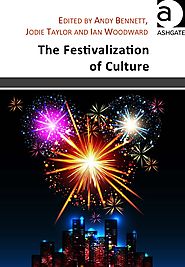
Drawing on current theoretical debates, international queer activist literatures, LGBTIQ press and my own participant observation of local pride festivities, this chapter will examine the meanings and functions of gay pride in the festival context.
Taylor, J. (2014). Festivalising sexuality: Discourses of pride, counter-discourses of shame. In A. Bennett, J. Taylor & I. Woodward (Eds.), The festivalisation of culture (pp. 27-48). London: Ashgate.
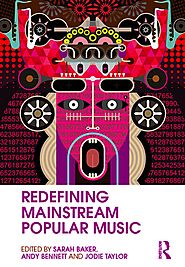
For a nebulous term like mainstream to function critically in studies of popular music we must first acknowledge that the, or rather, a mainstream is always an historically situated, contingent and contested term. In this chapter, through the lens of lesbian and queer feminist musicalities, I draw further attention to the limitations of the binary structuration of the mainstream vis-à-vis its subcultural Other. I argue that lesbian identity is (re)produced across multiple sites of popular music, concomitantly revealing the multiple strategies, politics, communions and contentions that figure in the musicalised representations of queer female intimacies. Furthermore, I consider the various ways that these representations are positioned in relation to notions of the mainstream, thus revealing the multiple discourses and connotations of the mainstream within lesbian and queer female music cultures, as well as particular abstractions of lesbianism with mainstream pop music. Progressing chronologically, I begin this chapter by outlining the emergence of womyn’s music in the 1970s. I then consider how select lesbian artists situated themselves within the mainstream during the late 1980s and early 1990s, enshrining their status as mainstream lesbian musical icons. To follow, I discuss the riot dyke critique first propelled by post-punk feminist musicians in the mid-1990s and ornament this discussion with localised ethnographic data, which illustrates the contemporary polychromatics of lesbian and queer musicalities. Finally, I will point to what some have termed ‘celesbianism’ or ‘fauxmosexuality’ in the mainstream pop arena of the 21st century.
Taylor, J. (2013). Lesbian musicalities, queer strains and celesbian pop: The poetics and polemics of women-loving-women in mainstream popular music. In S. Baker, A. Bennett & J. Taylor (Eds.), Redefining mainstream popular music (pp. 39-49). New York: Routledge.
For both the heterosexual and queer subject, subcultural participation and stylistic modes of cultural production and consumption, including popular music, are critical mechanisms aiding in the construction and expression of identity. Yet, in spite of abundant empirical examples of queer music cultures, subcultural studies scholars have paid minimal attention to queer sexualities and their concomitant stylistic modalities. In this article, I claim the importance of queer subterranean music cultures by synthesising significant literatures from various fields of inquiry including cultural sociology, popular musicology and queer studies. To begin, I will briefly clarify to whom and about what queer (theory) speaks. I then go on to offer an overview of subcultural and popular music research paying particular attention to the subaltern queer subject and surveying queer criticism within each field. Accordingly, I discuss various sites of popular music production and subcultural style such as punk and hip-hop, to show how non-heterosexual subjects carve space for resistant queer sexualities and merge queer sensibilities with pre-existing cultural forms. This article consolidates interdisciplinary approaches that will benefit scholars invested in the study of queer subcultures and popular music.
Taylor, J. (2013). Claiming queer territory in the study of subcultures and popular music. Sociology Compass, 7(3), 194-207
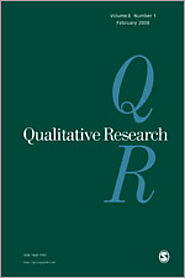
Favoured by ethnographers with some degree of closeness to the culture they wish to examine, the cultural participant as insider researcher has become relatively commonplace across the humanities. A large body of methodological literature now exists on this, highlighting the advantages and some of the dilemmas of conducting insider research. This literature is not exhaustive, as there remain elements of insider research still underdeveloped, such as how one goes about negotiating previously established friendships and intimate relationships in this context. Indeed, what are the benefits and dilemmas engendered by such negotiations? Drawing on existing scholarly accounts of field-based friendship and the author’s experiences of researching queer culture as an insider, this article addresses these questions in relation to the author’s field of inquiry and to social research paradigms more broadly. Subsequently, it argues that while being intimately inside one’s field does offer significant advantages, it also reshapes the researcher’s role in and experiences of her own culture and those within it.
Taylor, J. (2011). The intimate insider: Negotiating the ethics of friendship when doing insider research. Qualitative Research, 11(1), 3-22.
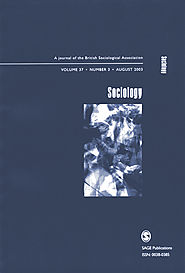
During the last decade in particular, the scope of queer scholarship has expanded. Queer readings, theories and problematics now pervade multiple sites of cultural and sociological thinking, reaching beyond the specificities of gender and sexuality and their attendant politics. While there is still important work to be done in these areas, thinking beyond the sexual act allows for an understanding of ‘queer’ through culture and as lifestyle. Here, I relate this specifically to music scene participation and middle age by exploring the significance of music and dance-based activities in the lives of queer people who do not perform their age in accordance with heteronormative conventions of social propriety and thus do not conform to desirable heteronormative temporalities. The concept of ‘queer temporality’ is not new, however this article demonstrates the relationship of musical time to this temporal scheme thus offering an additional perspective on queer time.
Taylor, J. (2010). Queer temporalities: The significance of music scene participation in the social identities of middle-aged queers. Sociology, 44(5), 893-907.
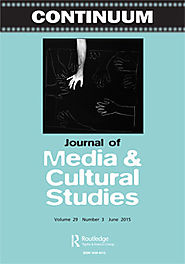
Historically, research on music cultures has favoured examination of the subcultural affiliations of the youthful urban white working-class heterosexual male. While the prominence of this subject has since been contested by a number of scholars, even the most celebrated forms of scholarship in this area continue to work within heteronormative discourses. In fact, omitted considerations of non-heterosexualities and sexual styles are a stark reminder of the frequent invisibility of the queer subject, not only in relation to much subcultural and post-subcultural theory, but also in relation to broader discussions about musical and extra-musical style generally. This paper addresses these omissions. Specifically, it reviews existing music scenes literature demonstrating how, as a theoretical concept, scene has emerged out of the reductiveness and rigidity of subcultural theory. It examines work on musically mediated performances of sexuality, identifying the need for more work around sexualities and music scenes in everyday contexts. It proposes how and by whom such work can be done. And it details the integration of queer theories into the music scenes perspective, showing how ‘scene’ can accommodate a more flexible approach to queer collective formations which is necessary for everyday musically mediated queer subjectivities to be understood.
Taylor, J. (2012). Scenes and sexualities: Queerly reframing the music scenes perspective. Continuum: Journal of Media & Cultural Studies, 26(1), 143-156.
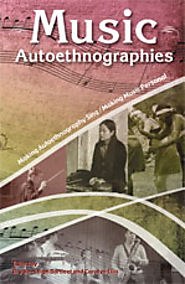
Music is an expressive mechanism of gender and sexual signification, capable of arousing and channelling sexual urges and desires. It is often through music that we express and make sense of our life-worlds, our bodies and our emotions; in music we give meaning to sound and give meaning to self. From the perspective of a queer female musician and music scholar, this chapter examines musical and musicological performances of queer identity and queer life-worlds—that is, the context and conditions of being and doing queer in and through music practice and scholarship. Using autoethnography, I reflect upon my intimate relationship with musical practice and scholarship, exploring how and why I have used music to express my non-normative gender and sexual identity. Moreover, I reveal the personal processes that led me to finding a space for my queer sexuality within music and how these processes have enriched my understanding of other queer musical practices and practitioners. Through a willingness to be vulnerable—to lay bare my ways of loving—I have found new ways of knowing myself, of knowing others and our musics.
Taylor, J. (2009). A way of loving, a way of knowing: Music, sexuality and the becoming of a queer musicologist. In B. Bartleet & C. Ellis (Eds.), Music autoethnography: Making autoethnography sing / making music personal (pp. 245-260). Bowen Hills, Qld: Australian Academic Press
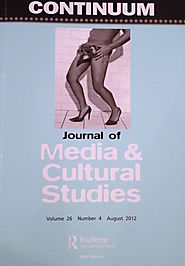
Across ages and cultures, music's relationship to sexual allure and its adept capacity for invoking pleasure, eroticism, and desire are well established. Music's ability to arouse and channel sexual urges and desires renders it both a dynamic mode of gender and sexual signification and a putative agent of moral corruption. Music can convey coded sexual innuendo, give shape to a person's erotic agency, or constitute a significant part of their sexual identity. For some, listening to music may, in fact, be considered an erotically pleasurable or even a sexual act. Drawing selectively on music's erotic history, on queer erotic possibilities, as well as on contemporary accounts of musically-mediated eroticism and identity situated across a broad range of popular genres, this paper will examine the way music can be used to catalyze and negotiate erotic pleasures. Specifically, it will examine this in terms of what the author names as ‘musico-sexual synergies’. These include: music as a stylistic marker of sexual identity; music as a structuring device for sexual action; and the fetishization of music and/or sound – that is, the sexual fetish known as ‘auralism’.
Taylor, J. (2012). Taking it in the ear: On musico-sexual synergies and the (queer) possibility that music is sex. Continuum: Journal of Media & Cultural Studies, 26(4), 603-614. Special issue: Erotic screen and sound.
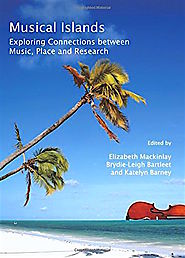
The articulation of sexual desire in contemporary popular music idioms has largely been the domain of heterosexuals. In the majority of popular music traditions queer musicians have been isolated, castaway or forced to remain within the binds of the closet; to the music industry their sexuality is an unfamiliar island. To achieve commercial status or public profile, queer artists are often required to maintain the he/she pronoun int heir lyrics, thus keeping any referral of affection or physical attraction to the appropriate gender—in other words—that which is not theirs. Outside the commercial radar however, queer musicians have found greater freedom to express desire and to publicly perform and articulate queer bodies, sex and gender. One such example of this is the DIY (do-it-yourself) culture of queer punk.To identify as both queer and punk is to simultaneously resist the cultural norms of gender, sexuality and musicality associated with both queer and punk rock cultures, and as such marginality forms a crucial aspect of a queer punk identity. While gender-bending fashions and sexual experimentation was a feature of 1970s punk (O’Hara 1999), the majority of contemporary punk rock scenes as well as society at large continue to uphold heterosexist values. Thus, queer punks are marginalised in relation to the dominant sexual practices associated with contemporary punk rock idioms. Furthermore, they are also marginalised in relation to the dominant musical tastes and styles associated with mainstream lesbian and gay culture. Being a queer punk musician forces one to problamatise not only punk rock music practices but also the set of available cultural practices and identities associated with mainstream lesbian and gay culture.
Taylor, J. (2009). Spewing out of the closet: Musicology on queer punk. In E. Mackinlay, B. Bartleet & K. Barney (Eds.), Musical islands: Exploring connections between music, place and research (pp. 221-241). Newcastle, UK: Cambridge Scholars Press.
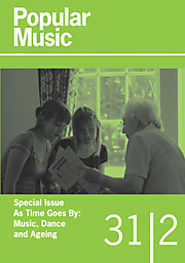
The cultural turn in sociology and related fields of study has brought with it new understandings of the various ways social identities are formed. In a post-structural landscape, social identities must increasingly be regarded as reflexively derived ‘performative assemblages’ that incorporate elements of the local vernacular and global popular cultures. Building on the above reinterpretation of social identity, this paper takes as its central premise the notion that, in addition to its well-mapped cul- tural importance for youth, popular music retains a critical currency for the ageing audience as a key cultural resource of post-youth identification, lifestyle and associated cultural practices. In its exam- ination of the relationship between popular music, ageing and identity, this paper uses illustrative examples drawn from ethnographic data collected by the authors between 2002 and 2009 in Australia and the UK.
Bennett, A., & Taylor, J. (2012). Popular music and the aesthetics of ageing. Popular Music, 31(2), 231-243. As time goes by: Special issue: As time goes by: Music, dance and ageing.

Various institutional legacies and contemporary social circumstances often work to constrain the voices and cultural expressions of gender and sexually diverse young people. However, gender and sexually diverse youth can also respond critically and creatively, generating their own sites of cultural participation and meaning. Through an empirical case study of Queeriosity – a queer youth cultural festival held in Brisbane, Australia – this article details the impetus behind the creation of this youth-led event. Second, drawing on participant observations and survey data collected at the festival, this article provides a ‘snapshot’ of the various identities, attitudes and cultural styles that circulate within Brisbane’s queer youth communities. Finally, it argues that the spectacle, celebration and diverse articulations of youth sexualities which underpinned Queeriosity provided participants with opportunities for sexual self-making.
Taylor, J. (2012). Queerious youth: An empirical study of a queer youth cultural festival and its participants. Journal of Sociology, 48(3), 1-16.
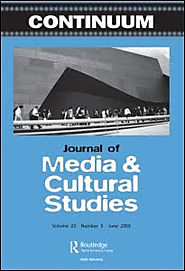
Brisbane’s queer scene is relatively obscure, outside of those who actively participate in it, little is known of it and practically nothing is written about it. Broadly speaking, queer culture works in direct contrast to the coherent and commodified culture of the gay mainstream and collectively rejects conventional ‘gay music’ favouring instead a multiplicity of musical styles and performances. This is particularly evident in the local context where queer clubs and events were born to facilitate the musical desires of those dissatisfied with the music spun weekly at mainstream gay venues.
This paper will demonstrate how the local queer scene’s musical eclecticism corresponds with its multifarious performances of queer sexuality, suggesting that queer musical performances and events produce a musico-sexual synergy that accommodates an array of sexual perversities and musical tastes. This paper will look at both the musical performances and related identity performances that occur in Brisbane’s queer club scene and queer social events, focusing particularly on the scene’s accommodation of ‘alternative’ musical tastes. Supporting material gathered from interviews with scene participants will provide the basis for a critical examination of Brisbane’s queer music scene, and will be placed in the perspective of contemporary discourse on both queer and musical identities.
Taylor, J. (2008). The queerest of the queer: Sexuality, politics and music on the Brisbane scene. Continuum: Journal of Media & Cultural Studies, 22(5), 651-665. Special issue: Music scenes.
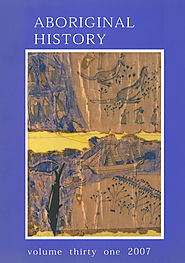
In the colonial history of black and white Australia, there are few recorded instances of public performances that draw together the traditions of Aboriginal and settler dance cultures to create mutually constitutive corporeal dialogues. Aboriginal academic Marcia Langton argues in an oft-quoted observation that settler experiences of Aboriginal culture have remained over time primarily visual and distant, both spatially and culturally, rather than embodied and contingent. It is not surprising, then, that settler encounters with Aboriginal performance have manifested primarily in spectatorship rather than interaction. In this paper, we explore two uncommon examples of embodied performance by non-Indigenous dancers directly inspired by white imaginings of Aboriginal culture. Exercising concern regarding the motivations and political implications of performance, we first examine the modernist ballet Corroboree (1954) and subsequently the neo-corroborees of contemporary ‘bush doof’ culture.
Haebich, A., & Taylor, J. (2007). Modern primitives leaping and stomping the earth: From ballet to bush doof. Aboriginal History Journal, 31, 63–84.

Taylor, J. (2007). Music of kings and bio queens: Performing gender and the self. Kritikos: Journal of Postmodern Culture, 4. Available at http://intertheory.org/kritikos

Hitchcock, M., & Taylor, J. (Eds.). (2012). Interactive: Refereed proceedings from the 2012 Australasian Computer Music Conference. Brisbane, July 12-15. Victoria: The Australasian Computer Music Association.
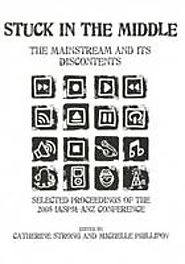
Taylor, J. (2009). Lesbian dissonance, music cultures and mainstreams. In C. Strong & M. Phillipov (Eds.), Stuck in the middle: The mainstream and its discontents. Selected papers from the 2008 IASPM Australia/New Zealand Conference (pp. 49-57). Auckland, NZ: IASPM-ANZ.

Taylor, J. (2008). Pink noise: Queer identity and musical performance in a local context. In D. Bendrups (Ed.), Music on the Edge: Selected papers from the 2007 IASPM Australia/New Zealand Conference (pp. 168-174). Dunedin, NZ: IASPM-ANZ.

Taylor, J. (2013). [Review of V01CE: Vocal Aesthetics in Digital Arts and Media edited by Norie Neumark, Ross Gibson and Theo Van Leeuwen]. Australasian Journal of Popular Culture, 2(2), 307-318.
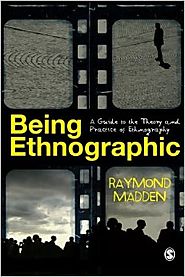
Taylor, J. (2011). [Review of Being Ethnographic by Raymond Madden]. Journal of Sociology, 47(1), 113-114.

Dr Jodie Taylor is a Senior Lecturer, Postgraduate Supervisor and Curriculum Designer. Through the lens of critical pedagogy, Jodie’s praxis-orientated approach to education is guided by the desire to help students become aesthetically inspired, media literate, culturally sensitive, critical and creative thinkers.
She is the author of Playing it Queer: Popular Music, Identity & Queer World-making (Peter Lang 2012), and co-author of Redefining Mainstream Popular Music (Routledge 2013) and The Festivalisation of Culture (Ashgate 2014). She has published more than 30 scholarly articles & chapters on popular music, gender, sexuality and ageing; queer theory, youth culture and subcultural style; and ethical relations in ethnographic fieldwork.